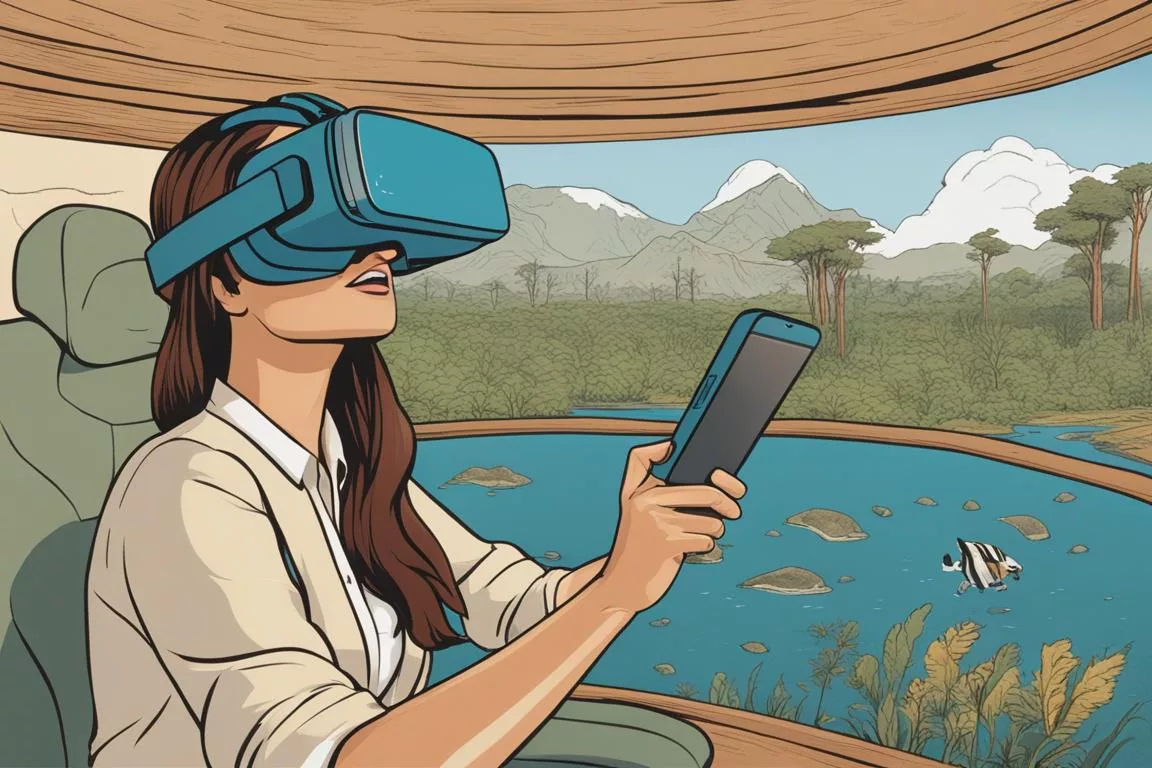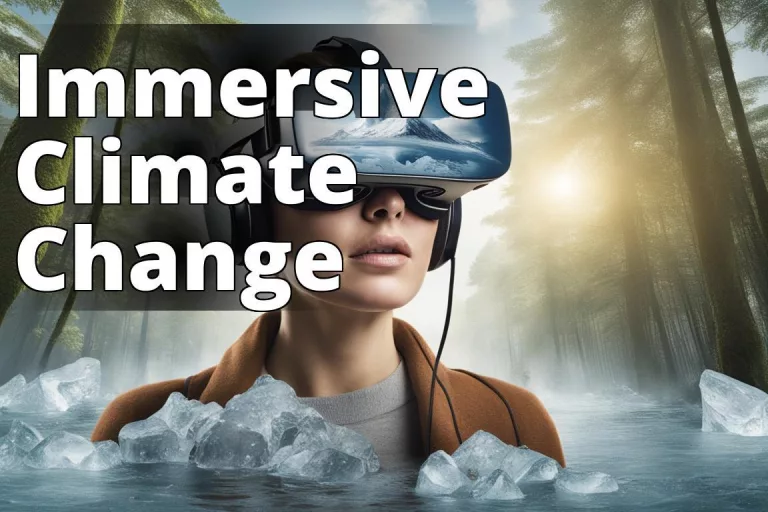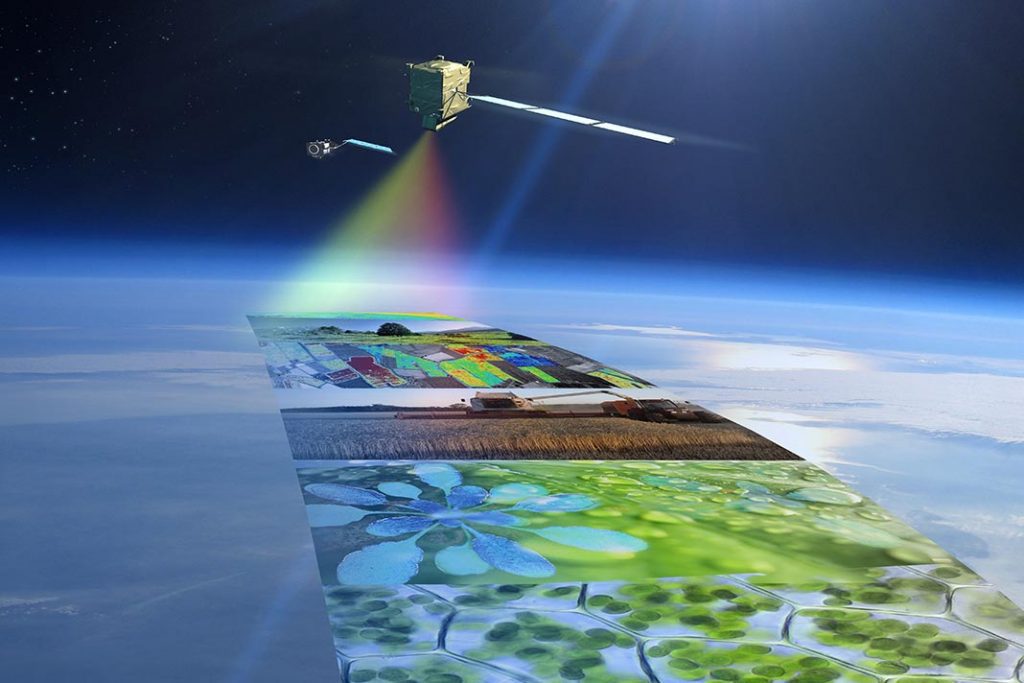In the age where technology and environmental conservation intersect, virtual reality (VR) stands out as a beacon of hope and innovation. It’s more than just a tool for gaming or entertainment; it’s a potent instrument for education, especially in the realm of climate change. The immersive nature of VR has the power to transform how we perceive, understand, and ultimately tackle the challenges posed by climate change. This isn’t just speculationit’s a reality that’s unfolding before our very eyes, and it’s crucial we pay attention.
How Virtual Reality Can Help Us Understand Climate Change
Seeing the Impact of Climate Change
Imagine standing in the middle of a once-vibrant coral reef, now bleached and dying, without leaving your living room. Or walking through forests ravaged by wildfires, witnessing the aftermath firsthand. This is the power of VR for climate education. It removes the distance between us and the often distant effects of climate change. Personal experience is unparalleled in its ability to generate understanding and empathy, and VR offers this experience virtually yet viscerally.
Insider Tip: “Seeing the melting glaciers through VR was a turning point for many of my students. It transformed statistics on climate change into a personal reality they couldn’t ignore,” shares a high school science teacher.
Understanding the Scale of the Problem
One of the greatest challenges in grasping the full scope of climate change lies in its sheer scale. How can one comprehend the vastness of ice sheets melting or the widespread nature of deforestation? VR has an answer. By placing users in an immersive environment, it can convey the enormity of these changes in a way traditional media can’t. This isn’t just about showing a before-and-after comparison; it’s about letting people experience the scale of loss and change, making the global nature of climate change a personal issue.
Making the Abstract More Concrete
Climate change is often a collection of abstract concepts for many people: rising temperatures, CO2 emissions, and sea-level rise. VR turns these abstract concepts into tangible experiences. Through interactive simulations, users can witness the consequences of their actions or inactions, such as how excessive CO2 emissions affect the atmosphere and, subsequently, weather patterns. This concretization of abstract data helps forge a more profound connection between our daily choices and their global repercussions.
Empathy and Action
Perhaps the most significant advantage of VR in the fight against climate change is its ability to foster empathy. By virtually placing individuals in scenarios affected by climate change, VR makes the plight of distant communities and ecosystems feel close and personal. This emotional connection can be a powerful catalyst for action. When people not only understand but feel the impact of climate change, they are more likely to take meaningful steps towards mitigation and adaptation.

A New Way to Communicate
VR also offers a novel means of communication, bridging gaps between scientists, policymakers, and the general public. Complex scientific data and predictions can be transformed into immersive experiences, making the information more accessible and engaging. This can enhance public understanding and support for climate policies, fostering a more informed and active citizenry.
The Future of VR and Climate Change
The potential of VR in climate education is just beginning to be tapped. As technology advances, we can anticipate even more immersive and interactive experiences. This could include real-time simulations of climate impacts or collaborative virtual spaces for global problem-solving. The future of VR and climate change is not just about visualization but participationengaging individuals in the process of creating solutions.
Insider Tip: “We’re experimenting with VR platforms that allow users to simulate the effects of different policy decisions on climate change. It’s a game-changer for public engagement,” reveals a tech developer working on climate solutions.
The Bottom Line
Virtual reality is not just a technological marvel; it’s a powerful ally in our quest to understand and combat climate change. By making the effects of climate change more immediate and personal, VR has the potential to change hearts and minds, spurring action in a way traditional methods have struggled to do. It’s a vivid reminder that technology, when aligned with environmental conservation, can be a force for good, offering us not just a window into the future but a tool to shape it for the better.
As we continue to explore the nexus of climate change and technological solutions, it’s clear that VR is more than a noveltyit’s a necessity. From smart city solutions for climate to nanotechnology in climate solutions, the integration of tech in our environmental efforts is key. VR stands out as a particularly promising piece of this puzzle, offering immersive experiences that can educate, inspire, and mobilize.
In conclusion, the journey to a deeper understanding and more effective action against climate change is complex and challenging. However, with tools like virtual reality at our disposal, we have an opportunity to make this journey more engaging, enlightening, and, ultimately, successful. As we look to the future, let’s embrace VR not just as a technological advancement, but as a gateway to a more sustainable and hopeful world.
Insider Tip: Dive deeper into how technology can aid in climate action by exploring resources on climate change communication tech, smart farming for climate adaptation, and AI in climate change prediction. The future is in our hands, and it’s more interactive than ever.
Answers To Common Questions
Who can benefit from virtual reality for climate education?
Anyone concerned about climate change can benefit from VR education.
What is virtual reality for climate education?
It’s a technology that immerses users in virtual environments to learn about climate change.
How can virtual reality enhance climate education?
VR allows users to experience climate change impacts in a realistic, immersive way.
Isn’t virtual reality for climate education expensive?
While initial setup may be costly, VR can reach and educate a wide audience.
How effective is virtual reality for climate education?
VR has been shown to increase engagement and retention of climate change information.
Who is developing virtual reality for climate education?
Various tech companies and educational institutions are developing VR for climate education.


